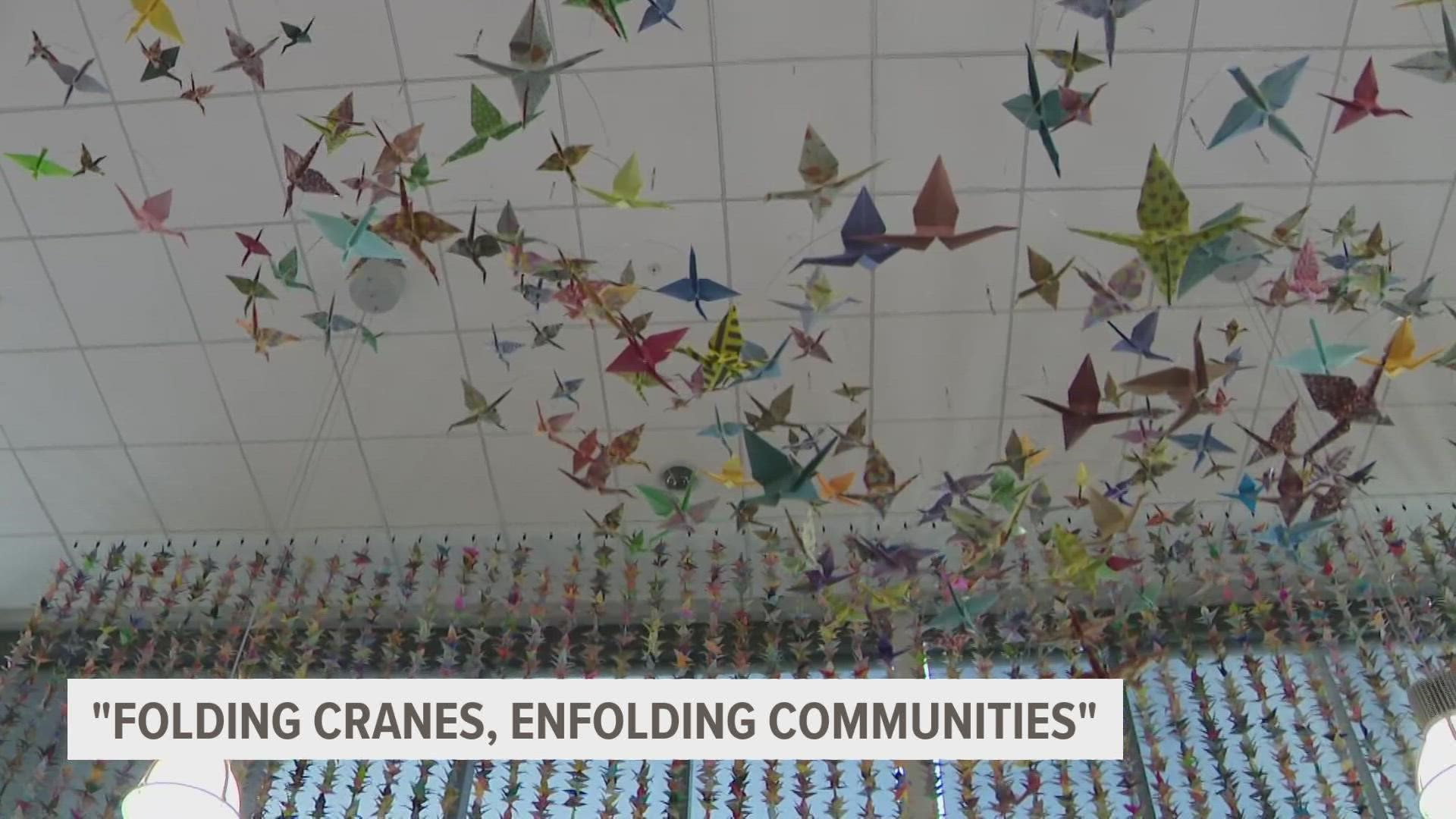ANKENY, Iowa — The COVID-19 pandemic continues to disrupt every facet of our lives, but while some are already back in the office, there are many who never made it back home.
As of Monday, 7,550 Iowans have died from the virus, according to the Iowa Department of Public Health. Every one of those Iowans is recognized at an art exhibit at the Des Moines Area Community College (DMACC) Ankeny campus.
"When all of us were in some level of isolation with a pandemic, my emotional and creative response was to fold all of about 200 of the origami cranes you see in the exhibit before you today," said artist Pam Douglas.
Douglas told Local 5 she's been drawn to the "creative expression" her entire life, even leaving the corporate world to become a full-time artist in the 90s.
"Artists create to convey what and how they think and feel. Sharing this expression with the community gives art its greatest power," Douglas said. "That's how we've landed here together, and why today we call this project 'Folding Cranes, Enfolding Community.'"
Douglas said her process starts by choosing a variety of papers, colors and patterns for each crane. She said she does this to "lovingly embrace the memory of each unique person who's died in this crisis."
When the names of the deceased were known, she's write them onto the crane's wings.
"The effect of this pandemic experience ranges from personal, to communal, to global. I felt a profound desire to express my solidarity in that collective loss," Douglas said about how the project came to be. "My early perception was that too much focus was on statistics versus human lives, and not on the emotional, mental effects of our communities."
Douglas continued, "We've lost loved ones, along with the impact of lost income jobs, housing and health, including physical, mental and emotional health. I want our memories to be not only of sanitizing everything, we're talking toilet paper hoarding, but in rightly remembering the grieving that's occurred."
The artist reflected on how political the pandemic has been, saying the "value of community" has been forgotten.
"We might be better served caring for the broken and encouraging solidarity with those who have lost someone," she said.
So, why the cranes?
"In Japanese culture, it's believed that if you fold 1,000 cranes, you'll be granted a wish. Another Asian belief is that the crane's wide wingspan and its ability to endure long journeys enables it to carry people to paradise," Douglas said. "Sadako Sasaki, a 1945 Hiroshima bombing victim, attempted to fold 1,000 cranes as a symbol of hope and healing. I borrow the symbolism of hope and healing for the families and friends who are left to grieve due to COVID."
WATCH | Coronavirus Cause & Effect: The virus in Iowa, 1 year later

